Scott Hamilton – 5 April, 2020
I had gone to Miranda Farm Gallery to look at paintings by the teenager Ercan Cairns. In the twenty-first century many young New Zealand artists still expatriate themselves to London or New York or Berlin, under the belief that smog and alienation are ingredients of genius. Cairns knows better; he has travelled to Tonga, and apprenticed himself to its Selaka Art and Kava Club.
New Zealand is closed; Auckland is closed. In the daytime, the city’s streets have become almost bucolic. Each has the melancholy silence, the sense of impotent expectation, of an estuary at low tide. Parked cars are like dinghies, waiting on cracked mud-tar for a flow that never comes. At night the streets are black and glossy, like deserted dance floors.
Aucklanders have been instructed to keep to their bubbles. Families walk together in parks, behind the two-metre wide cordon of air that protects them from the deadly snot and saliva of strangers.
But at the international airport in Mangere, bubbles were repeatedly broken, as expatriates returned from foreign lands with infectious embraces and handshakes for relatives and friends. The airport’s runways are now mostly silent. The Prime Minister has become an air traffic controller, giving jets permission to land or instructions to steer away. The few planes that alight on the airport tarmac are treated like enemy missiles. They are scrubbed down, deactivated, by teams in orange hazmat suits. Their occupants are interviewed by doctors, then locked into motel rooms.
And yet there is another airport, not far from Mangere, that remains as busy as ever during the coronavirus epidemic. Every day, without formalities, it welcomes thousands of flights, and sends off thousands more. No one checks the passports or the pulse rates of new arrivals. No traveller is quarantined.
The airport is called Tikapa Moana, or the Firth of Thames. Godwits, golden plovers, red knots, and a score of other species use its single broad runway. Some of them, like the godwits, have flown, or are about to fly, ten thousand kilometres non-stop. Their airport lounges are the shell banks and mangrove forest at the edges of the Firth.
A couple of weeks before the lockdown I visited Miranda Farm Gallery, which sits on a low ridge above the Firth. From the gallery’ss cafe I watched, as, in the distance, figures emerged from campervans parked on the shoreline shell bank. They crept on the shells, squatted, held beak-like cameras against their faces. Today the birdwatchers are gone, but the birds remain.
This epidemic has shown us the superfluity of humanity. While we sit watching Netflix, or pace our suburban parks as if they were prison yards, the other creatures of the earth go contentedly about their business.
The indifference of nature is something we can normally only grasp during personal crises. In 2006 C.K. Stead looked out his Parnell window and noticed that Auckland harbour was running vertically into the sky. Stead was suffering a stroke. After he had recovered, the poet took a swim in the harbour, which once again sat safely beneath the sky. He noticed how uninterested his fellow creatures were in him:
A gull drifts over
a tern
a gull again
This is the life that goes
godlessly on
a poem without words
a gift without conditions
I had gone to Miranda Farm Gallery to look at paintings by the teenager Ercan Cairns. In the twenty-first century many young New Zealand artists still expatriate themselves to London or New York or Berlin, under the belief that smog and alienation are ingredients of genius. Cairns knows better; he has travelled to Tonga, and apprenticed himself to its Selaka Art and Kava Club.
After I had admired Cairns’ Basquiat-influenced expressionistic canvases, Annie Wilson, the proprietor of the gallery, showed me the big sculpture that stands at the edge of her property, and looks towards the silver runway of the sea. It is one of a series of carvings that Fatu Fe’eu has installed around Te Ika a Maui—in parks, in the gardens of private homes, in front of ugly public buildings—over the past twenty years. I like to think of Fe’eu’s sculptures not as randomly scattered works of art but as parts of an active network, like Aotearoa New Zealand’s web of radio transmitters, or its grid of satellite dishes.
Fe’eu’s native Samoa has no sculptural tradition; he has had to look across the sea, to other Polynesian cultures, for materials and motifs. He visited Rapa Nui, and was impressed by the island’s stern stone visages, as well as by its mo’ai kavakava wooden carvings, with their skull-like heads and jutting ribs. He studied Kave, the huge expressionless carved goddess from Nukuoro, who was imprisoned for decades in a storeroom at Auckland museum, but who now presides over the institution’s Pacific Lifeways Gallery. (1)
The sculpture Fe’eu carved for Miranda is called Kuaka Mua. Kuaka is the Māori word for godwit; mua can mean first or paramount in Samoan. ‘Fatu loves this place’, Wilson told me. ‘He went with the birdwatchers to the shore, and heard a lecture on the godwits, their migrations, their endurance. He decided this was his spiritual landing site, if you like, in New Zealand.’
The shore of Tikapa Moana has long been a sort of portal, through which distant places and people emerge. Wilson’s gallery is a few kilometres south of Waihihi, an ancient landing site for waka, where a plantation of paper mulberry trees—the Maori word is aute—survived for centuries after cold weather and indifference had killed them elsewhere in Aotearoa. Today there are no aute left at Waihihi, but the groves of elderly puriri, karaka, and kouka and the warm lapping waters of the lagoon-like Tikapa a Moana make the site seem like a link to ancient Polynesia.
In 1863 something sinister came through the portal at Tikapa Moana. A fleet of fourteen craft arrived from Auckland, looking for supporters of King Tawhiao, whose Waikato realm George Grey had recently invaded. The warships Esk and Miranda fired their cannons at kainga beside the water; marines went ashore, and built redoubts beside abandoned pa.
Kuaka Mua has an enormously elongated neck, with notches that recall the rib lines of mo’ai kavakava. Its truncated arms and ambiguous genitalia pay homage of Nukuoro’s sacred statues. Fe’eu’s strange creature has huge dark eyes: they stare hungrily out to sea.
Fe’eu is not the first New Zealand artist to honour kuaka. In 1977 Ralph Hotere created an eighteen metre mural called Flight of the Godwit for Auckland’s airport. Hotere might have been thinking about Robin Hyde‘s 1938 novel The Godwits Fly, which makes the bird into a symbol of the Pakeha who lived in New Zealand but longed for their northern hemisphere homeland. ‘Most of us here are human godwits; our north is mostly England’ Hyde wrote.
But the kuaka does not fly to England; it does not even fly to Europe. The bird lands, after its ten thousand kilometre journey, on the coast of Siberia.
By placing his sculpture beside Tikapa Moana, the airport of the kuaka, rather than amidst the steel and glass of Mangere, Fe’eu perhaps offers a rejoinder to Hotere. And by identifying with a creature that flies beyond the Pacific, into the vastness of Asia, Fe’eu reminds us of the epic prehistory of his people.
We are used to thinking about Polynesians as islanders and navigators, the inhabitants of a liquid continent, but their Austronesian ancestors once lived in mainland Asia.
Although Taiwan is often cited as the Austronesian homeland, its indigenous peoples arrived, perhaps six thousand years ago, from the land that is now known as China. Some of their ancestors colonised Siberia many thousands of years earlier.
Today Siberia remains, despite the efforts of the Russian empire, a storehouse of ancient cultures. With their stoned shamans and ancient song cycles, the Koryaks and Evens and other Siberian peoples might even offer glimpses of fragments of an ur-Austronesian culture. Fatu Fe’eu’s kuaka flies deep into history.
Scott Hamilton
(1) I have written about the Nukuoro goddesses here: http://eyecontactsite.com/2017/08/gods-and-museums
Recent Comments
John Hurrell
Here is a poem Kayoi Kusama has written about the COVID catastrophe (on the David Zwirmer gallery website) https://www.davidzwirner.com/artists/yayoi-kusama and ...
John Hurrell
As we nervously approach the end of Level Two, here is a fascinating site for international art debate (Zoom panels ...



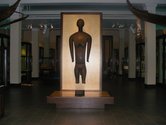
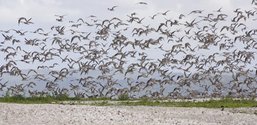

 Two Rooms presents a program of residencies and projects
Two Rooms presents a program of residencies and projects Advertising in this column
Advertising in this column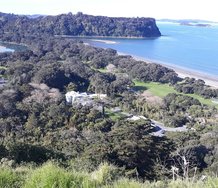
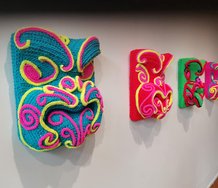
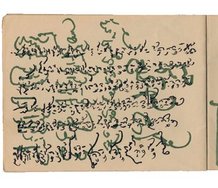
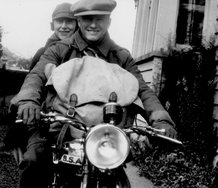
This Discussion has 2 comments.
Comment
John Hurrell, 9:30 a.m. 30 May, 2020 #
As we nervously approach the end of Level Two, here is a fascinating site for international art debate (Zoom panels etc) at Art Basel. https://www.artbasel.com/
It is v. easy to join up for free and log in.
John Hurrell, 8:44 a.m. 30 June, 2020 #
Here is a poem Kayoi Kusama has written about the COVID catastrophe (on the David Zwirmer gallery website) https://www.davidzwirner.com/artists/yayoi-kusama
and a review David Cross wrote for eyeCONTACT on her City Gallery show eleven years ago. http://eyecontactartforum.blogspot.com/2009/10/david-cross-visits-kusama-show.html.
Participate
Register to Participate.
Sign in
Sign in to an existing account.